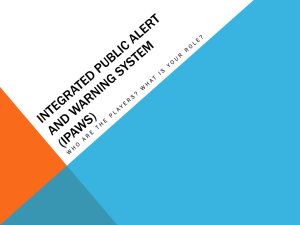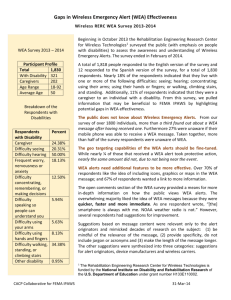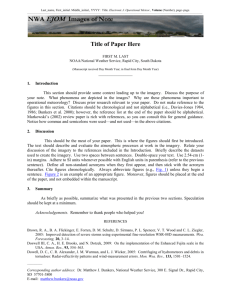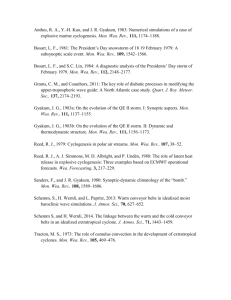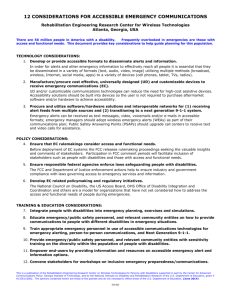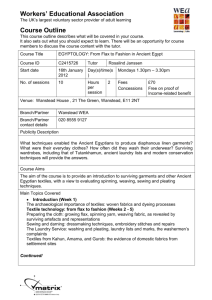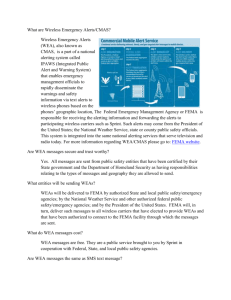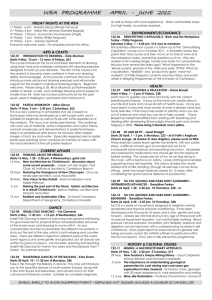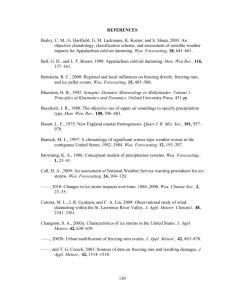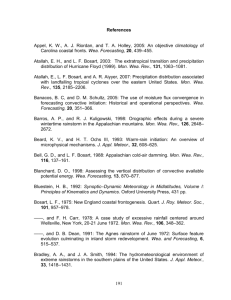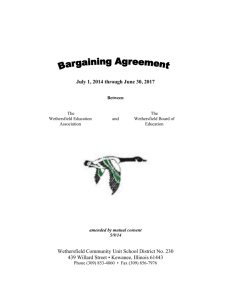Need to Know Information about Wireless Emergency Alerts (WEA)
advertisement
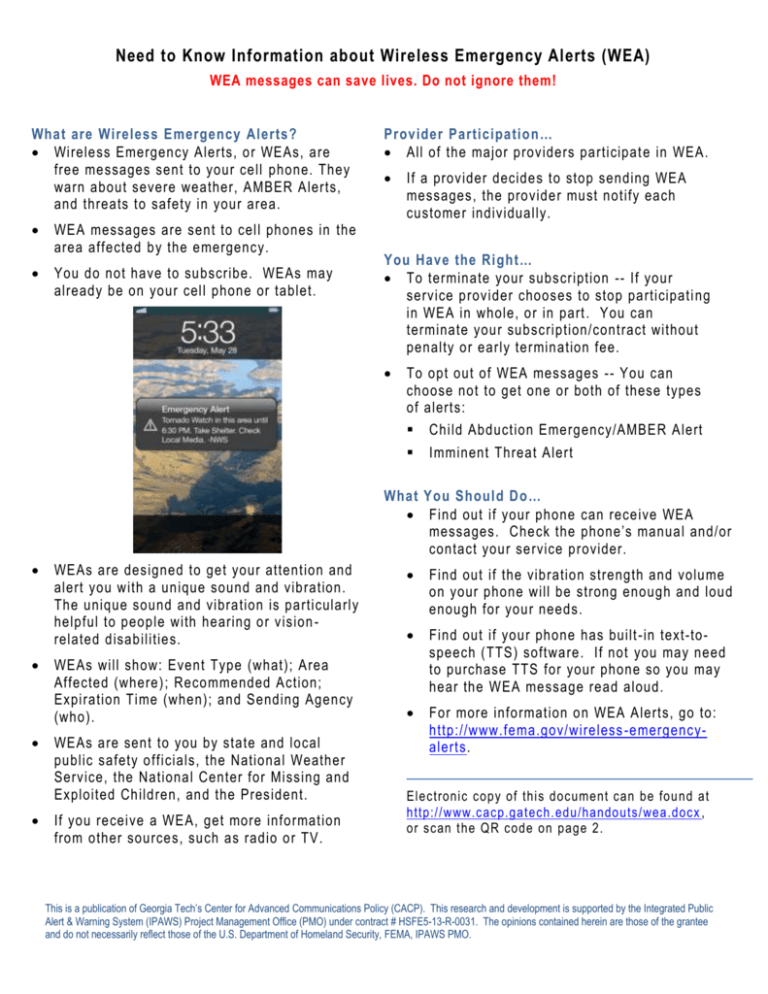
Need to Know Information about Wireless Emergency Alerts (WEA) WEA messages can save lives. Do not ignore them! WEA messages can save What are Wireless Emergency Alerts? Wireless Emergency Alerts, or WEAs, are free messages sent to your cell phone. They warn about severe weather, AMBER Alerts, and threats to safety in your area. WEA messages are sent to cell phones in the area affected by the emergency. You do not have to subscribe. WEAs may already be on your cell phone or tablet. liv es . Do not Provider Participation… All of the major providers participat e in WEA. If a provider decides to stop sending WEA messages, the provider must notify each customer individually. You Have the Right… To terminate your subscription -- If your service provider chooses to stop participati ng in WEA in whole, or in part . You can terminate your subscription/contract without penalty or early termination fee. To opt out of WEA messages -- You can choose not to get one or both of these types of alerts: Child Abduction Emergency/AMBER Alert Imminent Threat Alert What You Should Do… Find out if your phone can receive WEA messages. Check the phone’s manual and/or contact your service provider. WEAs are designed to get your attention and alert you with a unique sound and vibration. The unique sound and vibration is particularly helpful to people with hearing or vision related disabilities. WEAs will show: Event Type (what); Area Affected (where); Recommended Action; Expiration Time (when); and Sending Agency (who). WEAs are sent to you by state and local public safety officials, the National Weather Service, the National Center for Missing and Exploited Children, and the President. If you receive a WEA, get more information from other sources, such as radio or TV. Find out if the vibration strength and volume on your phone will be strong enough and loud enough for your needs. Find out if your phone has built -in text-tospeech (TTS) software. If not you may need to purchase TTS for your phone so you may hear the WEA message read aloud. For more information on WEA Alerts, go to: http://www.fema.gov/wireless -emergencyalerts. Electronic copy of this document can be found at http://www.cacp.gatech.edu/handouts/wea.docx , or scan the QR code on page 2. This is a publication of Georgia Tech’s Center for Advanced Communications Policy (CACP). This research and development is supported by the Integrated Public Alert & Warning System (IPAWS) Project Management Office (PMO) under contract # HSFE5-13-R-0031. The opinions contained herein are those of the grantee and do not necessarily reflect those of the U.S. Department of Homeland Security, FEMA, IPAWS PMO. For more information: www.cacp.gatech.edu ● 404-894-8297 ● LaForce@cacp.gatech.edu This is a publication of Georgia Tech’s Center for Advanced Communications Policy (CACP). This research and development is supported by the Integrated Public Alert & Warning System (IPAWS) Project Management Office (PMO) under contract # HSFE5-13-R-0031. The opinions contained herein are those of the grantee and do not necessarily reflect those of the U.S. Department of Homeland Security, FEMA, IPAWS PMO.

